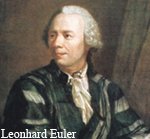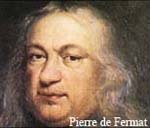Prime Numbers
Greeks philosophers and geometers classified numbers in different ways. One of the most relevant of those classifications is the one that divides numbers into two groups: those numbers that are exactly divisible by at least one positive integer other than the number itself or the unit – numbers in this group are called composite-- and those others very special numbers who have no divisor except the number itself or the unit. Those are called Prime Numbers. Why these numbers are considered “special” in any sense? Let's go back to ancient times and read the definition Greeks had for these numbers: A prime number is that which is measured by a unit alone. (Euclid, The Elements , book 7, definition 11.)
By then, in Euclid's times, numbers were understood as segments of a line, a specific magnitude with respect to the Unit. (For the Greeks one was not considered a number, but only the Unit; the first number was indeed 2.) What Euclid says is that some magnitude, like 100 can be measured in different ways: one hundred units, fifty times two units, twenty five times four units, twenty times five units and by one hundred –the number itself- as a unit. 101, however, does not contain any multiple of the unit but the unit and the number itself.
Not having that many divisors is something that can be expected for the smallest numbers; however, prime numbers don't cease to exist and turns out that they keep being as recurrent as they are in the first one hundred digits.
Primes are much more than a simple curiosity: the Unique Prime Factorization Theorem known as The Fundamental Theorem of Arithmetic asserts that any integer greater than one can be written as a unique product of prime numbers. In this regard, prime numbers are the jewel of number theory. There exists a hunting project of Prime numbers, Great Internet Mersenne Prime Search or GIMPS
For those interested in the subject this is a good site to start: The Prime Pages, prime number research, The University of Tennessee at Martin.
Is There Any Regularity in the Distribution of Prime numbers? At this respect The prime Number theorem gives us part of the answer; the unsolved Riemann Hypothesis about the zeros of the zeta functions, may reserve for us the complete response.
A nice introduction to Prime Numbers, +Plus math magazine: A whirlpool of numbers by Nick Mee
Anyone interested in the subject must be familiar with definitions like Mersene Primes, Fermat Primes, Fermat little Theorem and the Prime Number Theorem, etc. Some resources on the web on these topics fallow:
MathWorld, Wolfram: The Prime Number Theorem
Professor Keith Delvin, How Euler Discovered the zeta function Also Euler and the Zeta function, Mathematical Association of America by R. Ayoub
The math videos page of this site includes: Professor Marcus du-Sautoy - Music of The Prime Numbers and Professor Tao's lecture: Structure and Randomness in the Prime Numbers.
How to memorize the first 25 Primes Numbers: Digging into the distribution of the first 25 primes.
These are the first 25 Primes:
2, 3, 5, 7
11, 13, 17, 19
23, 29
31, 37
41, 43, 47
53, 59
61, 67
71, 73, 79
83, 89
97.
Observations:
Two is the only even prime, and no Prime may end in two (as any other number ending in two is divisible by two and therefore a composite number).
Five: no other prime number ends in five because numbers ending in five are divisible by five and therefore composite numbers.
This is, remove 2 and 5 as last digit of any prime and consider 1 and 9. Primes' last digit may be 1, 3, 7 or 9. 2 and 3 are the only two consecutive primes (since no other even number is prime, there is no way of having two consecutive primes except 2 and 3). Then in the first ten positive integers we have two twin primes: 3 and 5, 5 and 7. (Twin primes are those only differ from the following prime number by two).
Then we get into the second ten positive integers: we have here a representation of primes ending in the four different ways they end: 1, 3, 7 and 9. Again, like in the preceding ten integers, there are two couples of twins.
In the following tens we should memorize that except for the forties, the seventies and the nineties all others ten integers have two primes. And, whenever the first prime within that ten integers ends in 1, the next ends 7; else, whenever the first ends in 3, the second ends 9.
The forties and the seventies have 3 primes: 41, 43, 47 and 71, 73, 79.
There is only one in the nineties: 97.






